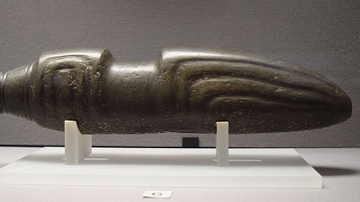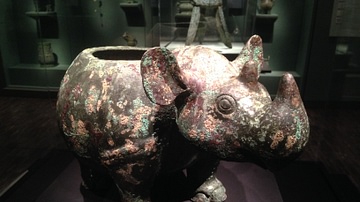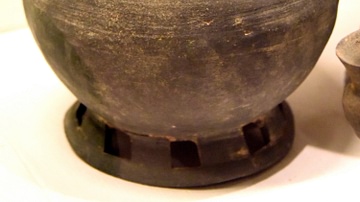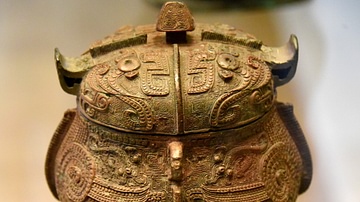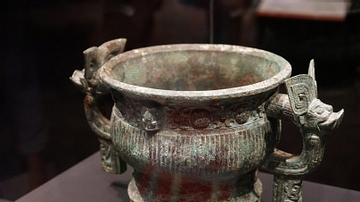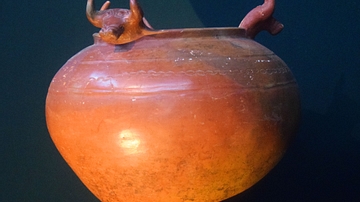Illustration
These ancient ceramics are decorated with cord markings. They gave the Jomon period, (13,00-500 BCE) its name; Jomon means "cord-marked". A stick was wrapped with braided cord and then rolled over the surface of the vessels to decorate them. Most of the posts seem to have been for cooking or storage. From about 2500 BCE, ceramics known as "flame pots" were produced in what is now Niigata prefecture. They have dramatic flaring rims and were probably used in rituals. Earthenware. From Japan. 13,500 to 500 BCE. (The British Museum, London).
About the Author
Cite This Work
APA Style
Amin, O. S. M. (2018, December 12). Jomon Ritual Pottery Vessel. World History Encyclopedia. Retrieved from https://www.worldhistory.org/image/9524/jomon-ritual-pottery-vessel/
Chicago Style
Amin, Osama Shukir Muhammed. "Jomon Ritual Pottery Vessel." World History Encyclopedia. Last modified December 12, 2018. https://www.worldhistory.org/image/9524/jomon-ritual-pottery-vessel/.
MLA Style
Amin, Osama Shukir Muhammed. "Jomon Ritual Pottery Vessel." World History Encyclopedia. World History Encyclopedia, 12 Dec 2018. Web. 16 Apr 2025.



